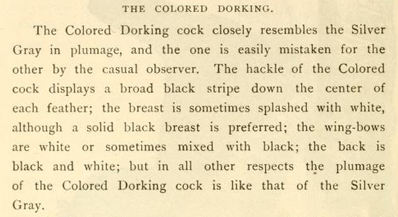- Jun 19, 2010
- 357
- 14
- 100
Hi Ron,
No disrespect taken. I think almost everyone who breeds dorkings in the us nowadays needs to know how to take criticism, because lets face it compared to other breeds such as modern games, call ducks etc that the poultry shows are overrun with the dorking needs a lot of work. for example when I look at my flock i could imagine that if they were a more common breed where high quality stock are readily available, well they would all be considered pet quality birds. but as it is, when i compare my birds to the birds i have seen in pictures of stock from mcmurry and sand hill i can see that my birds are better on average. In fact I am often left in somewhat of a conundrum when it comes to shows as I want the SGD to be represented but i am also aware that other breeders will look at my birds and not recognizing how rare they are think that I am a poor poultry breeder. I finally made the decision a while ago that I am going to show them anyway as long as the bird does not have a disqualification. That said I still get annoyed when i overhear talk putting my SGDs and stew pot in the same sentence. Makes me want to make some snide comment about their tiny little chicken that they paid $200 dollars for not being worth the $3 they spent to enter it, if it were anywhere except the showroom. Well thats enough of me ranting.
Welcome to the dorking discussion Lino. i am interested to hear about what the dorkings are like in germany. What is the most common variety (color) there?
If the birds are of good quality and the general impression screams DORKING!!! then show them and have fun. Judges are regular folks like the rest of us and not endowed with higher powers. So just like the exhibitors some will be more knowledgeable and familiar with any given breed than others. Listen, pay attention but use your own two eyes and experience. Know what you have for the most part at least before entering. Do not depend on the judges to formulate your breeding program. So many times we hear I will see what the judges think. That is fine to a point but in the end we have to have some decent idea of what is wanted, what we actually have and where we want to go. WE are the breeders exhibiting our work. I feel it should be a safe assumption that we know a bit about what we are doing. You have expressed some satisfaction with your birds and program. Then be off and enjoy the show, naysayers and all LOL.



